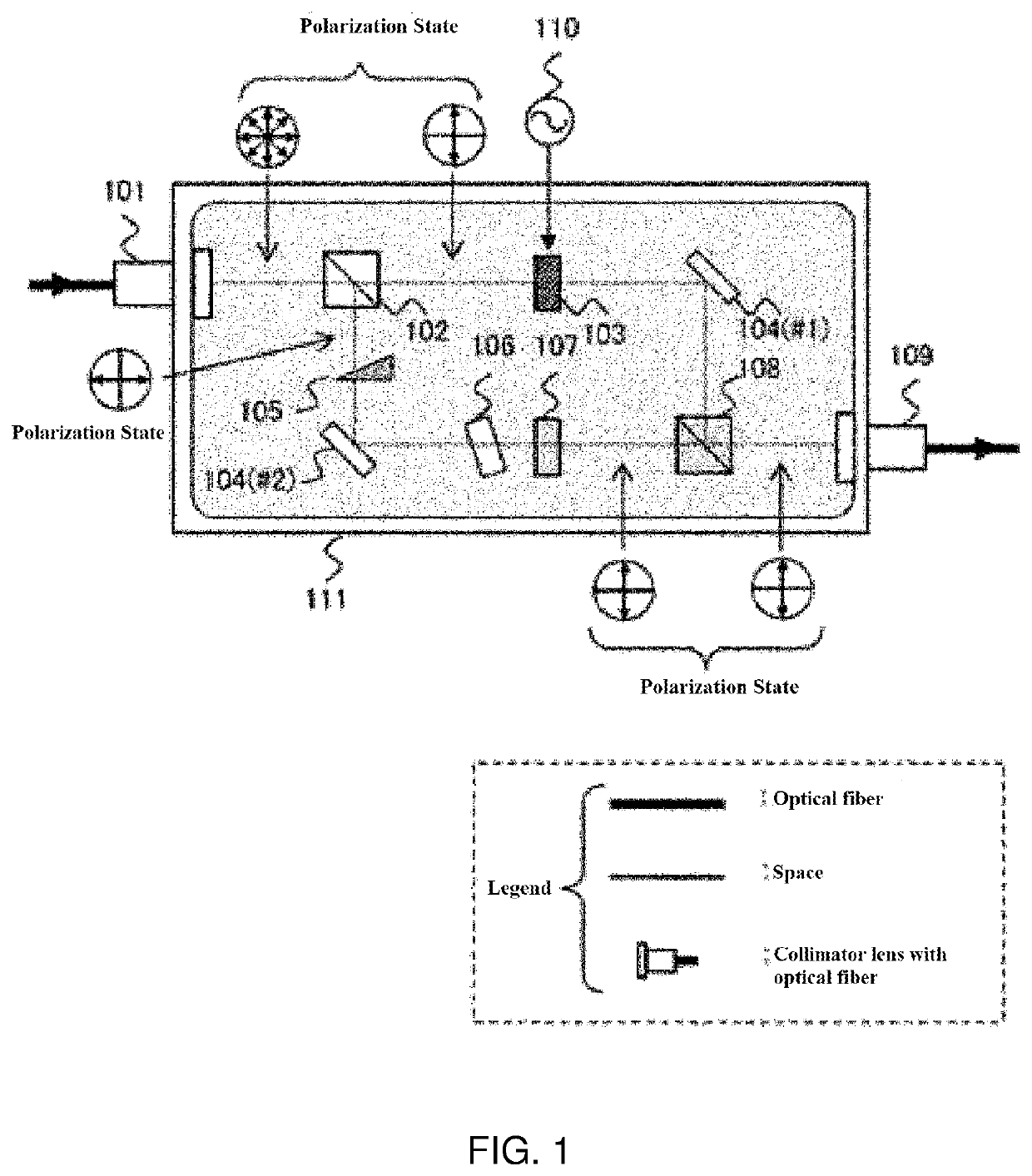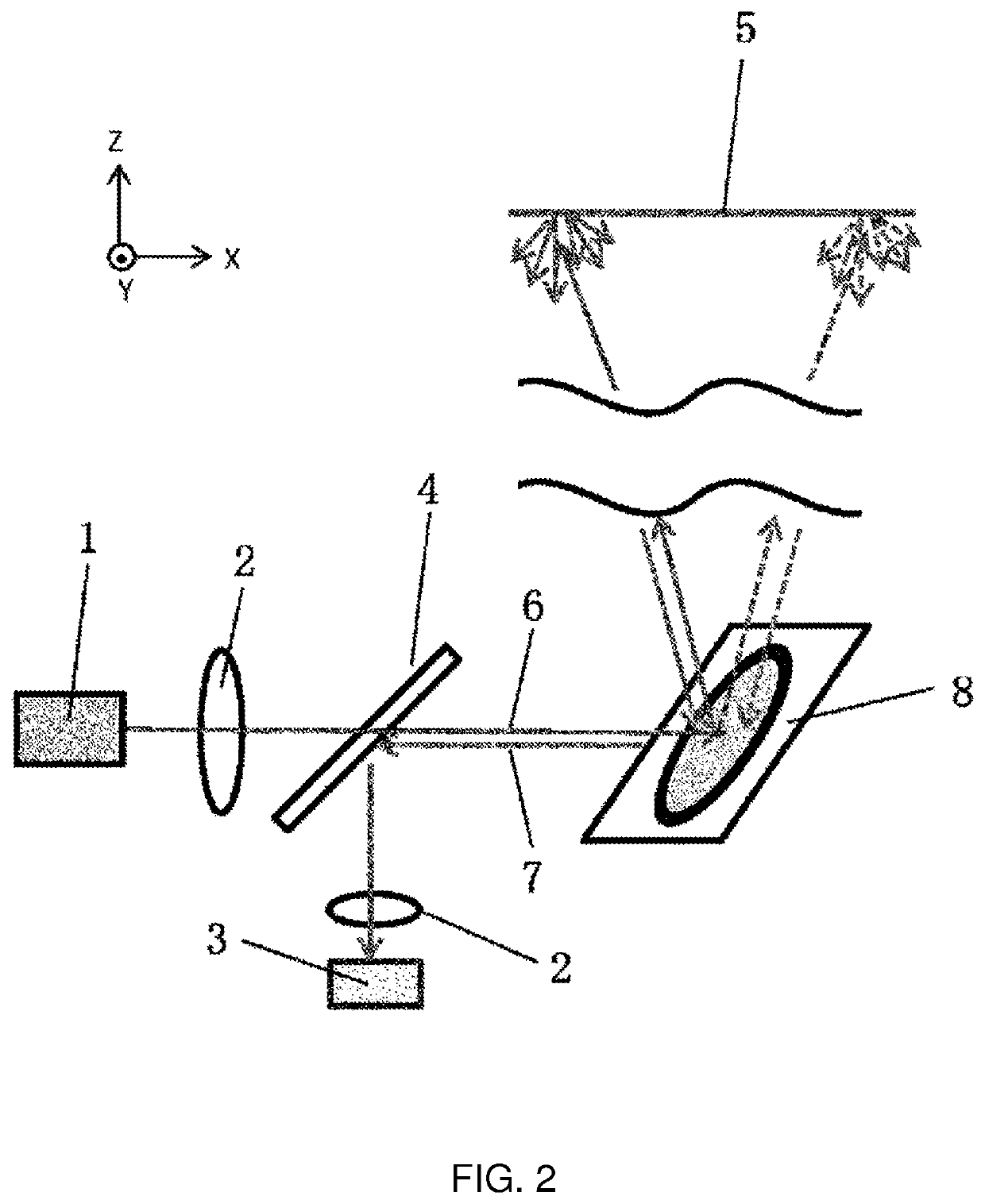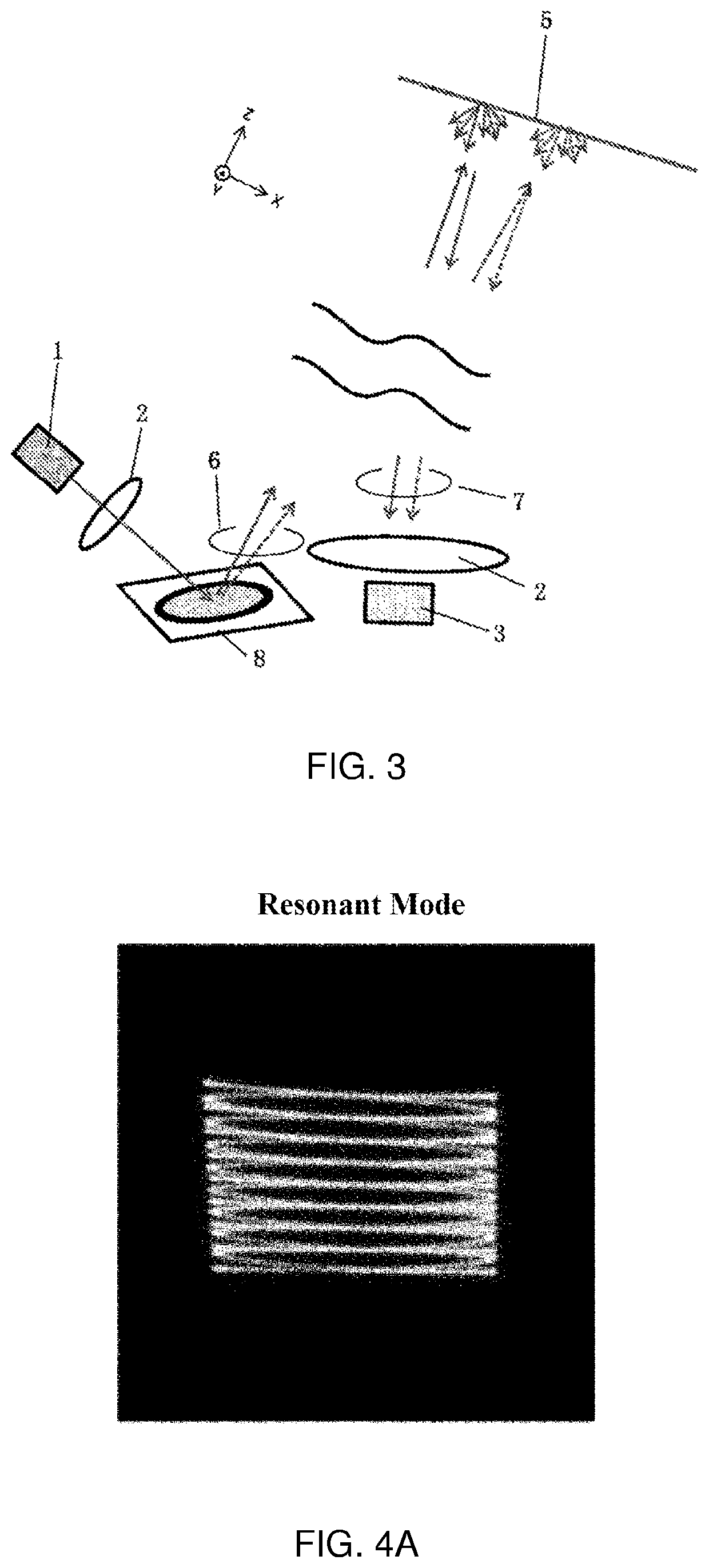Circular polarization-type polarization diversity element, scanning element using same, and lidar
a technology of diversity element and polarization type, applied in the direction of polarizing element, instrument, measurement device, etc., can solve the problems of difficult mounting of lidar on top of the vehicle, unsuitable for mass production, unusable element operating on circular polarized light, etc., and achieve the effect of reducing the effect of temperatur
- Summary
- Abstract
- Description
- Claims
- Application Information
AI Technical Summary
Benefits of technology
Problems solved by technology
Method used
Image
Examples
embodiment example 1
[0057]FIG. 7 shows one embodiment example of a circular polarization-type polarization diversity element 71 according to the present invention. Light beams 32 which exited from a single-mode optical fiber 31 is collimated by a lens 2. Their polarization states may be broken down to the right-handed circular polarization (corresponding with m=+1: indicated by solid lines) and the left-handed circular polarization (corresponding with m=−1: indicated by dashed lines). Light beams 32 subsequently enter polarization gratings 92, and then, the right-handed circularly polarized light and the left-handed circularly polarized light are directed (deflected) upwardly and downwardly, respectively, and converted into respectively reverse-circular polarizations.
[0058]FIG. 8 shows a structure and functionality of a polarization grating 92. The polarization grating 92 is composed of, for example, liquid crystalline polymer or the like, and its directors rotate along an axis of rotation A at a const...
embodiment example 2
[0066]One example of light beam digital scanning elements using the present circular polarization-type polarization diversity element 71 is shown in FIG. 9A-FIG. 9C. FIG. 9A shows a light beam digital scanning element, and FIG. 9B shows a basic unit. Also, FIG. 9C is an enlarged view of a structure of an area enclosed by a dashed-dotted line A of a polarization switching element 91. The light beam digital scanning element 90 shown in FIG. 9A has a desired number of the connected, multistage basic units 94, each shown in FIG. 9B, provided with the circular polarization-type polarization diversity element 71 and a lens 2.
[0067]As illustrated in FIG. 9B and FIG. 9C, the basic unit 94 has the polarization switching element 91, which is defined by polymer-stabilized blue phase liquid crystal 95 sandwiched by two plate electrodes 96, each having a transparent electrode 97 formed on a glass substrate of the respective plate electrodes 96; and two wedge blocks 93 of a material with high ref...
embodiment example 3
[0080]FIG. 11 shows one embodiment example of Lidar capable of implementing the above-described scan. The present Lidar is the same coaxial system as the one in FIG. 2 discussed previously in terms of configuration, but this Lidar is using a transmissive-type light beam digital scanning element 90 instead of a reflective MEMS mirror 8 as a steering element.
[0081]On the other hand, various schemes have been reported for Lidar modulation. In the present embodiment example, ToF (Time of Flight) scheme is employed as a modulation scheme. This scheme measures a time difference T between light pulse 9 transmission (light pulse 9 received at a light receiving element 3) and light pulse 10 reception (light received at the light receiving element 3) to measure a distance d to an object 5, according to d=cT / 2 (here, c is the speed of light). Note that T is corrected as needed depending on optical path lengths in the Lidar configuration.
[0082]In order to improve the distance precision, an elec...
PUM
 Login to View More
Login to View More Abstract
Description
Claims
Application Information
 Login to View More
Login to View More - R&D
- Intellectual Property
- Life Sciences
- Materials
- Tech Scout
- Unparalleled Data Quality
- Higher Quality Content
- 60% Fewer Hallucinations
Browse by: Latest US Patents, China's latest patents, Technical Efficacy Thesaurus, Application Domain, Technology Topic, Popular Technical Reports.
© 2025 PatSnap. All rights reserved.Legal|Privacy policy|Modern Slavery Act Transparency Statement|Sitemap|About US| Contact US: help@patsnap.com



